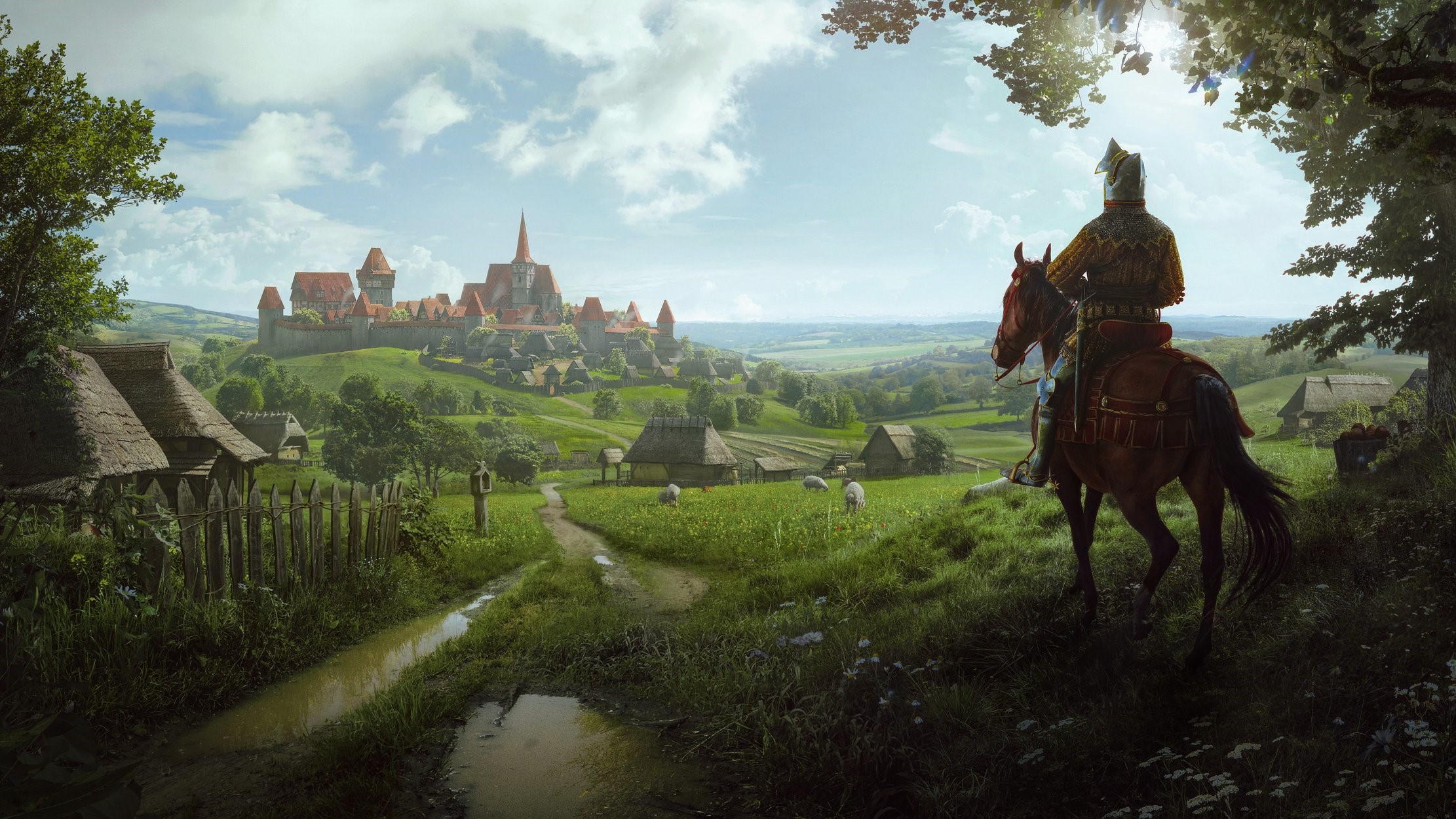
Not for the first time in Manor Lords, I find myself staring at a cow. Well, technically, it’s an ox, but it’s the same principle: has four legs, makes moo sounds. I have the camera zoomed in low to the ground and angled so I can watch the muscley bovine pull a plow through the field, carving deep furrows into the fertile soil. From this angle, I can see beyond the ox into the next field and the one beyond that, where ant-like farmhands are bent double sowing seeds in the earth, preparing for the coming summer.
There is no need for me to watch the villagers and their animals toil in the fields; you can play the strategy game Manor Lords much more efficiently from a zoomed-out position. Yet, as with so much in this game, there is a magic that comes from leaving the clouds and watching your decisions play out on the ground in your people's everyday lives.
There is a lot that makes Manor Lords good - it plays like a grab bag of features from other excellent PC strategy games - but it is this camera that reveals what makes the game special.
From humble beginnings
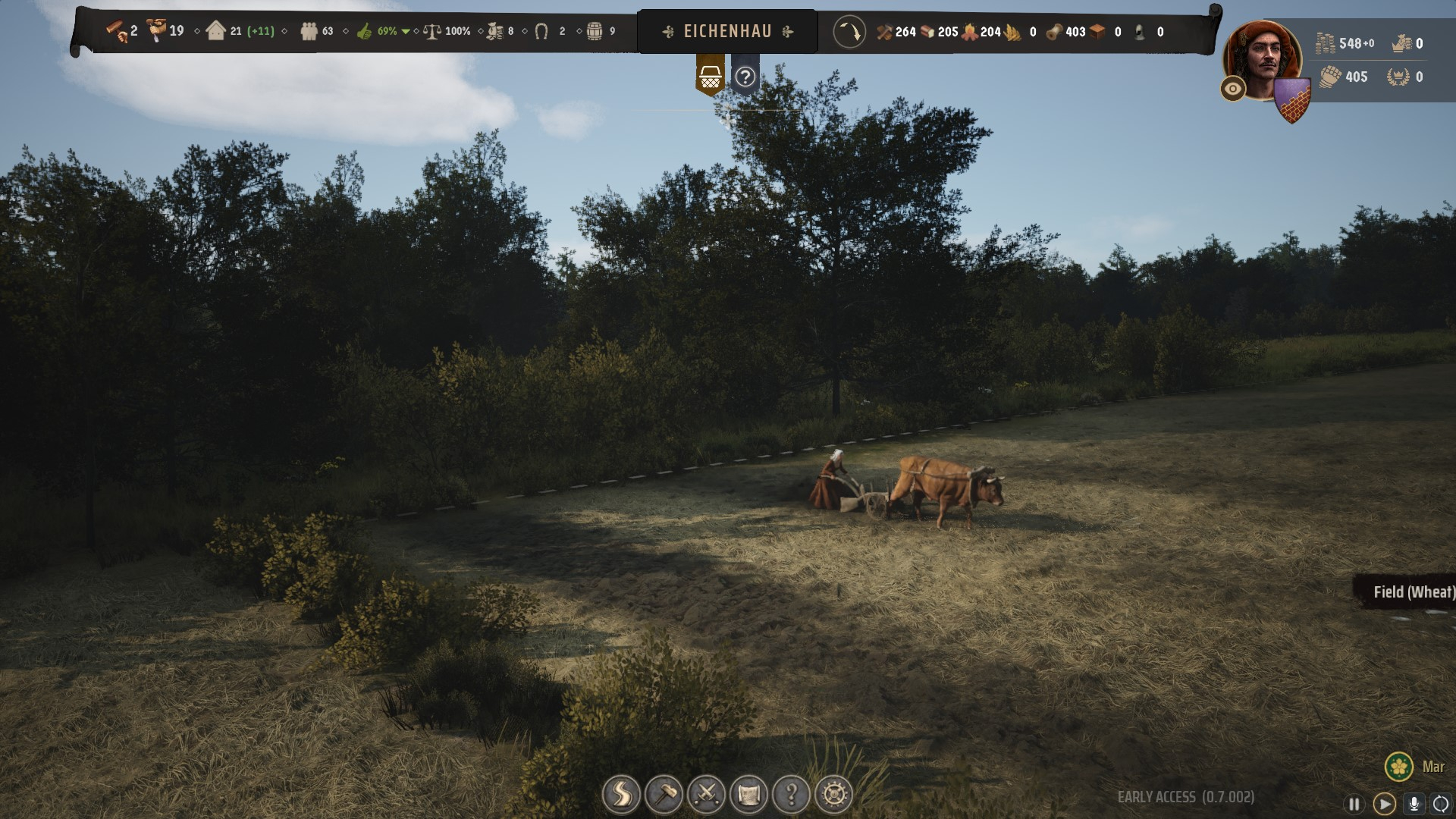
Set in medieval Europe sometime toward the tail-end of the 14th century, you start Manor Lords with control of a small settlement in one region of a large campaign map. The few families who follow you at the start of a campaign are homeless, hungry, and looking for protection from the incoming winter, so you need to tell them where to build houses, a woodcutter’s lodge, and either a forager’s hut or a hunting camp to ensure they’re getting all the resources they need to survive those first harsh months.
Manor Lords is a city builder, not dissimilar to the Anno games or Cities: Skylines. You’re forever managing the tension that comes from a growing population, both allowing you to build more advanced industries but also bringing with it growing needs. Opening an iron mine, a bloomery, and a blacksmith, for instance, lets you collect ore, refine it into iron slag, and then craft it into armor you can sell to traders or use to kit out your armies. But you will also need to build hen coops and churches to make sure your workers’ stomachs and souls are looked after.
There’s deep satisfaction to be found in watching your small settlement grow into a sprawling town bustling with life. Loose tents and piles of resources becoming rows of homes, each housing vegetable plots, animal pens, or artisanal businesses in their backyards; store houses, granaries, and market squares becoming hives of activity as shopkeepers and customers swap their goods; pack animals, villagers, and traders walking the curving roads you laid down, trekking to and from work. At times it looks like a Renaissance painting of rural life.
From field to battlefield
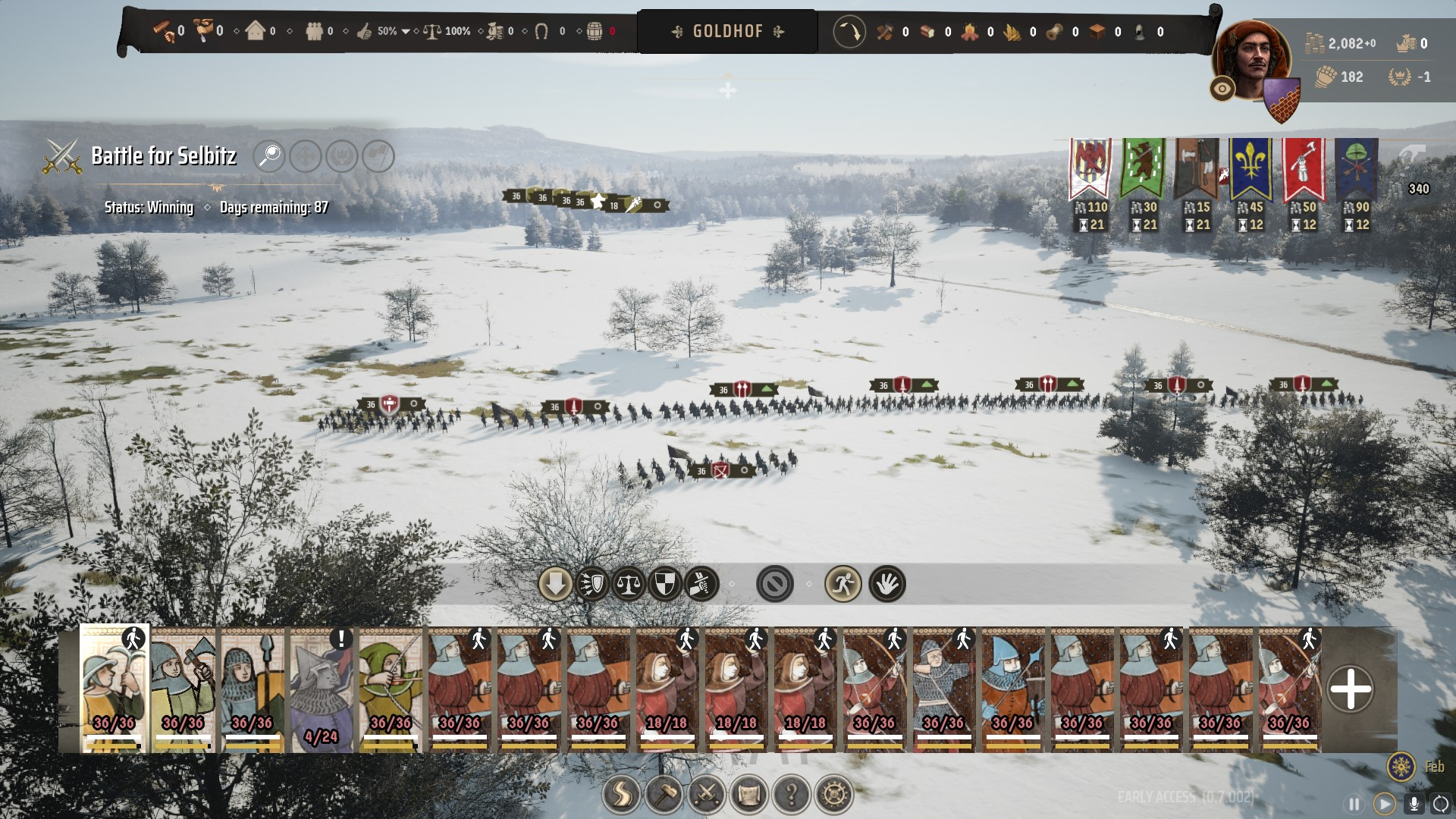
As your city grows, you must set your sights on conquest. Whoever was drawing up the region boundaries of Manor Lords was paying scant regard to equality: some regions have rich iron deposits, others fertile soil for farming, while another may have plenty of stone to quarry. No one region has everything. To reach those resources, you must stake claims on the territory around you, and here, Manor Lords becomes closer to games like Civilization; looking at the big picture to work out what your current domain lacks and which lands you must take to get it.
Expansion is costly. Not only do you need to spend slow to earn influence points on staking a claim but fielding an army has significant tradeoffs.
Like the food in your granaries and the firewood in your storehouses, your armies come from the lands you own. So long as you have the weapons and armor you need, either sourced from the tradepost or your blacksmiths, you can form militia units, pulling troops from the fields and mines. Going to war to claim regions from rival lords is costly not just in life but lost production across your realm.
Not only are Manor Lords’ systems and simulations connected, but you can see them in action.
Battles in Manor Lords resemble Total War, with long lines of units in formation racing toward each other on muddy plains, arrows arcing overhead. As in Creative Assembly’s games, if you use the slope of the land and the changing weather tactically, you can gain an advantage. Units forced to charge archers placed uphill will grow tired; swordsmen charging downhill carry more deadly momentum; troops attacked in the rear suffer greater losses.
There is enough tactical depth here that you can overcome a larger enemy force with enough tactical nous.
Before your eyes
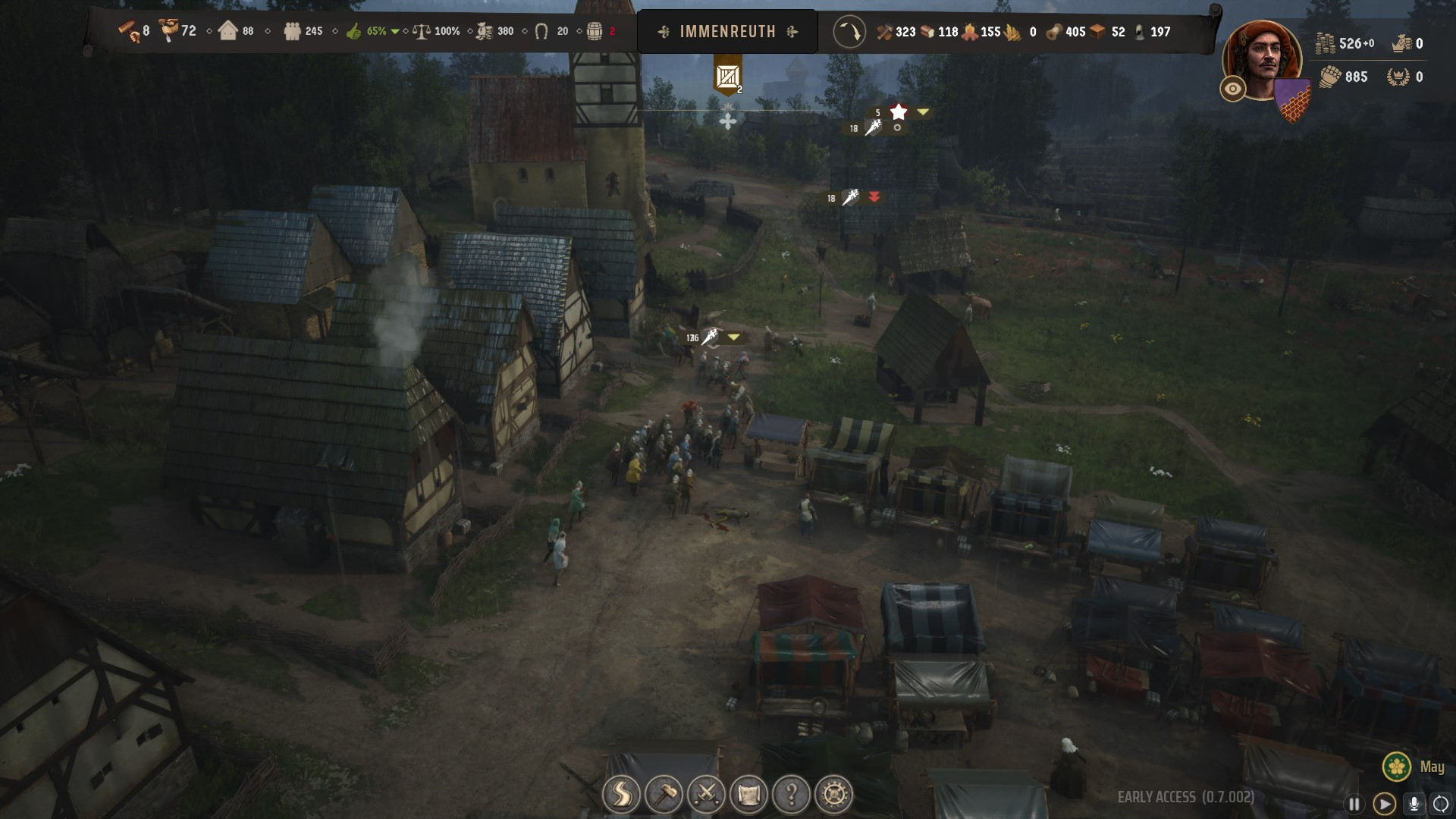
There's nothing fundamentally new in Manor Lords; it's a medieval strategy game that’s a bit Anno, a bit Civ, and a bit Total War. What makes it special, however, is that it does it all in front of your eyes in real time.
For context and comparison, Total War is effectively two games welded together - a turn-based boardgame-looking grand strategy and a real-time battle sim where you play out the effect of army pieces colliding - and Civilization is a turn-based strategy played from the skies - you can bring your camera close to the cities you manage but never take it inside them. Those games represent the connection between land and air - the armies you move around in Total War are comprised of the units you see on the field in real-time battles - but the disconnect of a loading screen also creates a sterile distance. This isn’t true of Manor Lords.
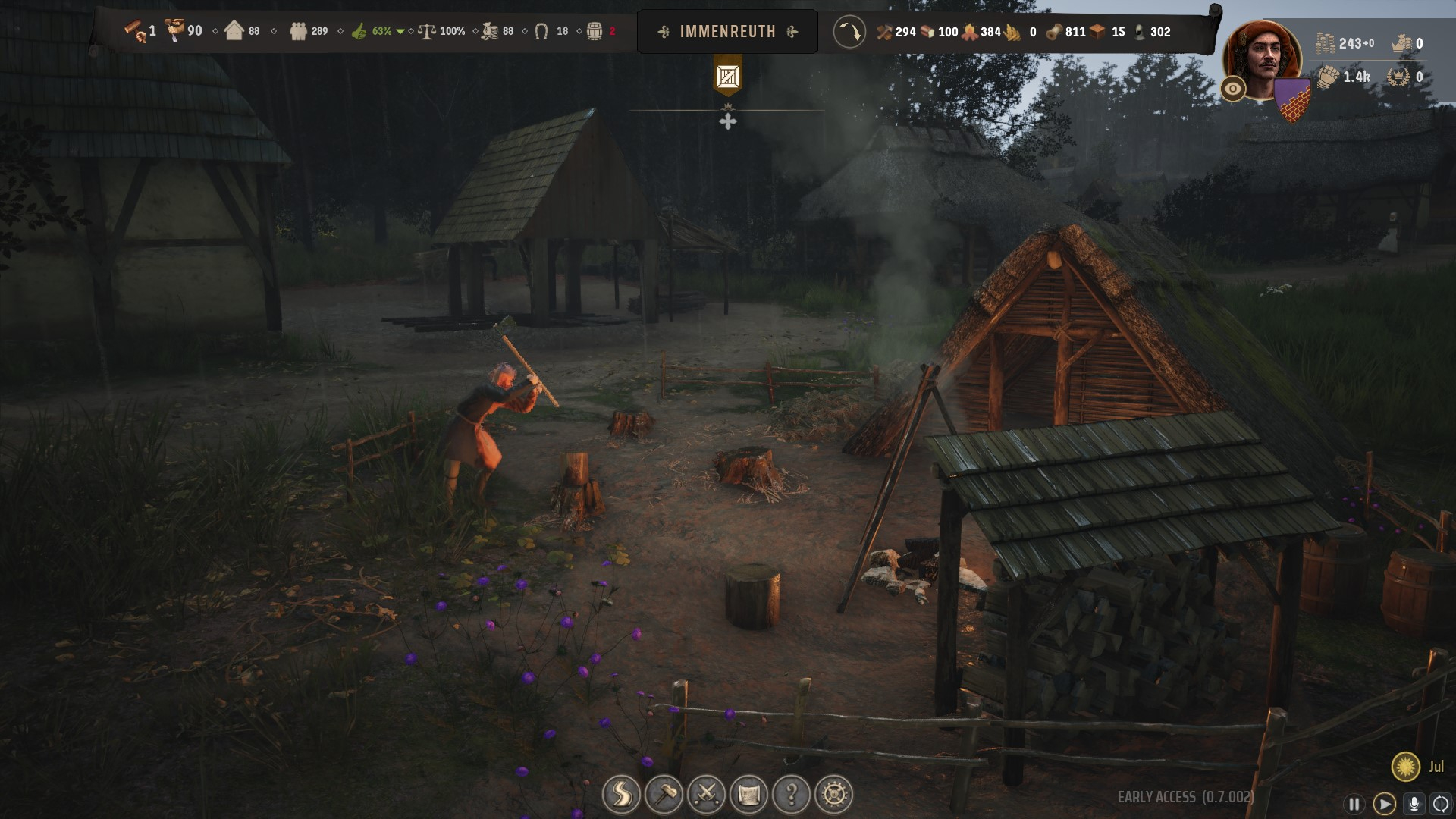
There are no loading screens separating the different parts of Manor Lords; everything takes place on one very large map. You can seamlessly zoom down to ground level to watch your workers in the mines or out into the sky to assess the different regions of the map.
Not only are Manor Lords’ systems and simulations connected, but you can see them in action. You can watch an ox plow a field and then see the crop grow and be harvested. Farmhands take the wheat to a windmill, where it is ground into flour, and then to a baker, where it is turned into bread.
You can watch that bread be dropped at a market where it is bought by a villager and taken home. If there’s a blacksmith in that home, you can see them forge armor that is dropped off at the nearest storehouse. When you raise an army and watch villagers run into the storehouse and emerge in their battle gear, you can follow them as they march across the map to war. You can see them die in battle and their bodies return to the earth.
This chain of events is represented in many strategy games, but in showing it, Manor Lords brings humanity to a genre that often forgets the people you rule.
You might also like...
- All our top picks for the best PC games
- Our selections for the best PC controllers to consider now...
- ... as well as the best PC gaming headsets







